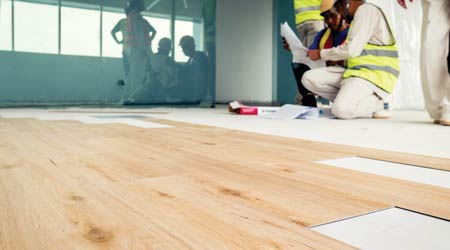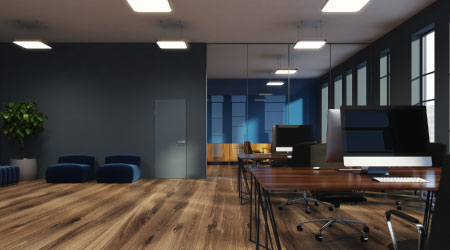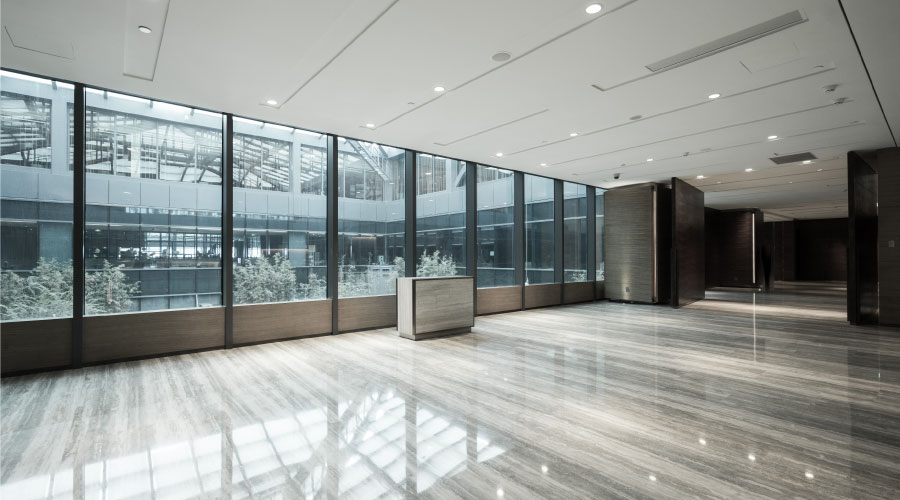 The investment in flooring and installation is a long-term commitment. Cutting corners in either materials or installation will cost more in the long run.
The investment in flooring and installation is a long-term commitment. Cutting corners in either materials or installation will cost more in the long run.How to Consider Flooring Maintenance Costs
Bottom line: Skimping on maintenance will always increase the life-cycle cost of floorcoverings.
You should think of floorcoverings just as you do any equipment you invest in: It must be taken care of with a planned maintenance program. No matter how good the flooring and installation are, the product’s life will be compromised if it is not properly taken care of. This means a program of daily, weekly, and monthly maintenance with products specifically made for the product by people who know the product and how to care for it.
Good maintenance requires having educated staff or contractors. Manufacturers of the product that was used could help train the cleaning and maintenance staff. Building occupants can also be enlisted to help improve maintenance. A floor cleaning station for occupants to address spills is a simple, easy, and effective way to keep the place clean and improve maintenance. This may simply be an area where occupants can get paper towels and an approved spray cleaner or dry compound cleaner to address spots and spills immediately. Another option is a dedicated phone number or email address to report a spot, spill, or soiling issue that needs attention. This too is an investment in the care and longevity of flooring.
The key to the maintenance program should be appearance retention. This approach will extend the life and lower the long-term investment in the appropriate flooring.
Unfortunately, what often happens is that maintenance is cut to reduce costs. For example, with carpet, vacuum schedules get cut, causing a build-up of dry particulate soils which have mineral granules with cutting edges that can cause fiber loss. Or an extended schedule for care is instituted to cut costs. Either way, a very important maintenance strategy is made less effective: Vacuuming will remove 80 to 85 percent of particulate soil, which is the biggest culprit with carpet; the other 15 to 20 percent is soil that requires deeper cleaning. Dealing with 90 to 180 days or more of soils left on the floorcovering will require more deep cleaning, which costs more because of the increased labor needed for slower processes.
There are ways to reduce costs without reducing the amount of maintenance performed. Some tools for maintenance trim cost because they can perform multiple functions or work on other flooring surfaces in the building, like counter-rotating brush machines for carpet, wood, and luxury vinyl plank and tile. Those machines can be rotated throughout the building, replacing vacuuming with no additional labor cost. This can be done with in-house staff or by contract cleaners. You just have to work with them to implement the cleaning system — and it is a system, not just a task.
What’s the return on the cost of proper maintenance versus poor maintenance? It’s the extension of the useful performance life of the flooring material versus the abbreviated life due to not properly maintaining the flooring. What you may save in maintenance costs will be more than offset by the greater cost of having to replace the floorcovering prematurely. While it’s hard to put a number on the return on the maintenance investment, it’s clear that good maintenance costs less than having to replace the flooring and incur all the expenses associated with that, including business interruption.
When thinking about returns on the money spent on maintenance, remember the consequences of poor flooring maintenance also include lost image, early replacement of the floorcovering (which affects depreciation schedules), and possibly sick building syndrome. And if you’re looking at “cleaning for health,” the cost of neglecting maintenance includes higher levels of absenteeism, possibly lower test scores for children in schools, and lower levels of occupant morale, feelings of well being, and even safety.
Bottom line: Skimping on maintenance will increase the life cycle cost of a floorcovering and bring other undesirable consequences. The better you take care of the flooring, the longer it will last, and the longer it lasts, the less it will cost.
Related Topics:














